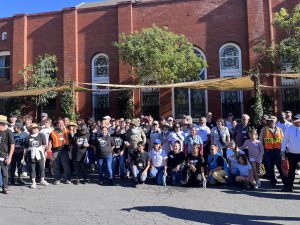Learn More
Free & Reduced-Price Lunch
Metadata
Variable Definitions:
Free & Reduced-Price Lunch: The percentage of students who are eligible to receive aid from the National School Lunch Program (NSLP)
Methodology Note:
The original data comes at the school level. Our team geocoded the school locations to generate X/Y coordinates, then spatial joined each point to 2020 Census Tracts.
Source:
California Department of Education (CDE) Ed-Data/Data Quest
Years Available:
2015, 2016, 2017, 2018, 2019, 2020, 2021, 2022, 2023, 2024
*The COVID-19 pandemic resulted in statewide physical school closures in February/March 2020 followed by the widespread implementation of distance learning during the 2020–21 academic year. The California Department of Education (CDE) recommends caution when comparing discipline data across academic years.
Why are these variables important to measure?
Free & Reduced-Price Lunch
The number of students eligible for free & reduced-price lunch is often used as a proxy for student socio-economic need in a neighborhood. The National School Lunch Program (NSLP) is a federal program started in 1946 that provides free or reduced-price lunches and snacks to eligible students at public schools, nonprofit private schools, and residential child care institutions. Schools receive subsidies and food from the U.S. Department of Agriculture (USDA) for each meal that they serve. Eligible students must have family incomes below 130 percent of the federal poverty line for free lunch or below 185 percent of the federal poverty line for reduced-price lunch. The lunches and snacks served must meet the nutrition standards set forth by the latest federal Dietary Guidelines for Americans. School districts and independent schools must opt into the program and work with state governments on program operation and implementation.
Citation:
“The national school lunch program.” United States Department of Agriculture: Food and Nutrition Service, November 2017. Link
Related Data Stories

The Book Truck: Delivering Literacy in Southern California
Why Do Some People Read? For children in some communities, books and reading are omnipresent. Reading begins as amusement and entertainment and grows into a



